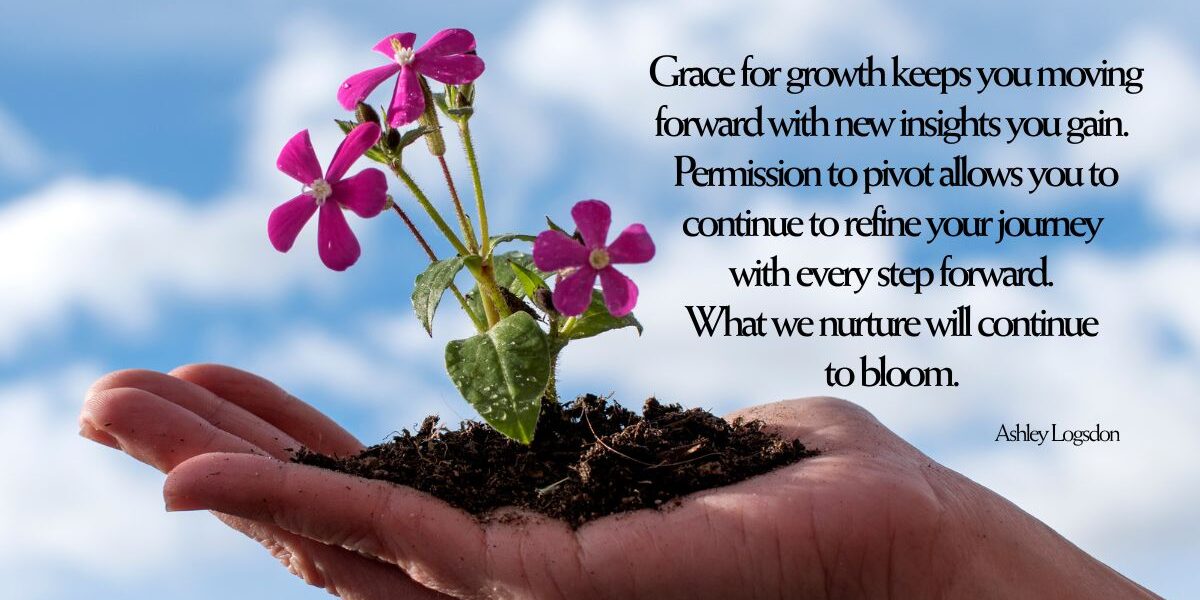Every year, we spend time setting goals—looking ahead, assessing the past, and sketching out the steps that will move us forward.
Sometimes those goals can be inspiring, fueling our progress. But other times, they can feel like a prison sentence—rigid, overwhelming, or even discouraging.
If that’s ever been your experience, here’s some encouragement: your goals don’t have to be limiting. Instead, they can be a way to connect with who you truly are and how you want to live.
Here are four things to consider as you set your goals this year. The key is adding grace for growth and permission to pivot.
1. Focus on the Feeling Behind the Goal
One of the biggest shifts in goal-setting is recognizing that it’s not really about the goal itself—it’s about the feeling you want to experience.
When Nathan and I went on our ten-year anniversary trip, I was reading Danielle LaPorte’s The Fire Starter Sessions. The core idea of the book is simple but powerful: identify the emotions and desires behind your goals, not just the milestones.
Think about it:
- You want a six-figure income. Why? What will that do for you? Is it about security, freedom, confidence, or the ability to give generously?
- You want to lose weight. Why? Is it just about the number on the scale, or is it really about energy, health, or self-confidence?
When you identify the feeling behind the goal, you gain flexibility. Success can show up in many forms, and you don’t box yourself in with only one definition.
2. Balance Head and Heart
My dad (Dan Miller) used to say he was the “head” and my mom was the “heart” of their radio show. I love that picture—because the truth is, you need both.
Too much “head” (logic, plans, numbers) and you risk creating goals that only drain you. Too much “heart” (feelings, inspiration) and you may never put action behind your dreams.
That’s why I love this acronym for EAGLE goals, created by our friend Roxanne in the 48 Days Eagle Alliance Community:
- E – Does the goal give you Energy?
- A – Are you in a position to take Action?
- G – Is there opportunity for Growth?
- L – Are you ready to Live it?
- E – Do you have Encouragement from others?
Your most powerful goals will integrate both head and heart. They’ll be grounded in logic and action, but fueled by meaning and desire.
3. Break It Down Into Steps (and Allow Grace for Growth)
We teach our kids to look at their achievements and then work backward, listing all the small steps that got them there. It’s a great exercise in developing a growth mindset.
The same is true for you. When you break down big goals into small, manageable steps, you begin to see progress—and progress fuels momentum.
But here’s the key: give yourself grace for growth.
Sometimes new insights or unexpected circumstances will shift your path. That’s not failure—it’s growth. Ask yourself: What does this make possible? Be willing to pivot and adjust along the way.
4. Create a Vision of YOU (and Your Family)
Before you set specific goals, step back and look at the bigger picture: Who do you want to be?
The 48 Days Eagle Alliance has been focusing on creating a “Vision of You” that includes your skills, personality, values, and desires. It also includes how you want to show up for others. If you’re feeling unsure, a DISC Personality Profile can be a great starting point—it gives you language for your strengths and tendencies.
And don’t stop at your personal vision—consider your family vision too.
When Nathan and I created ours, we realized that while we often plan for careers or businesses, we rarely take time to dream as a family. Our family vision boiled down to six words: Explore, respect, listen, connect, learn, and love.
It doesn’t have to be complicated. But having a shared vision keeps everyone aligned and helps guide the goals you set—not just for yourself, but for your home.
Get Ashley’s guide on creating your Family Vision here.
Permission to Pivot
At the end of the day, goals are not about locking yourself into a rigid plan. They’re about direction, growth, and becoming the person you want to be.
So as you look at your goals this year, ask yourself:
- What do I really want to feel?
- Do my goals balance both head and heart?
- Am I willing to give myself grace for growth?
- How does this fit into my bigger vision—both for myself and my family?
One of the best ways to gain that accountability edge is to join us for The 48-Day Goals and Guideposts Challenge, where we’ll dive into creating 48-day sprints for your goals, developing systems and processes, and helping you set up your own accountability network. It’s designed to give you structure, community, and accountability so you don’t just set goals—you actually reach them.
Get the first session FREE here and find out how you can join us in time for the second session on October 15th.
Related Article: The Power of Accountability In Achieving Your Goals







